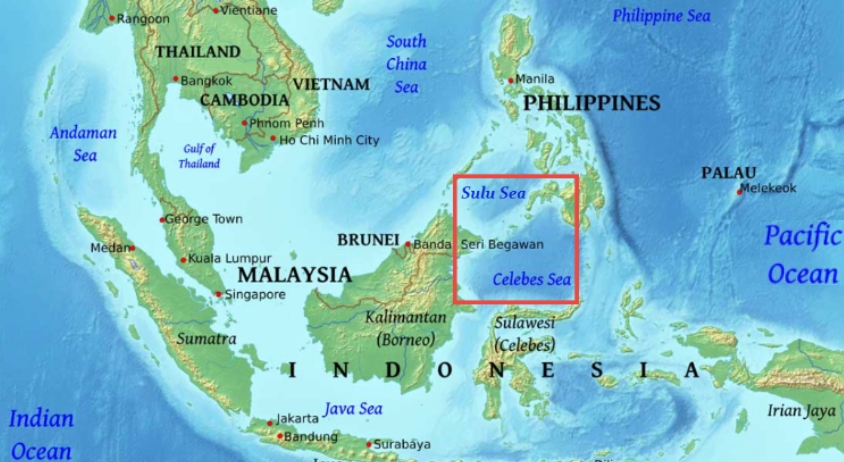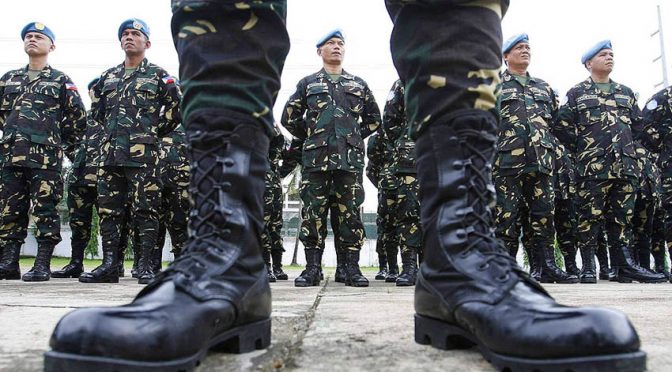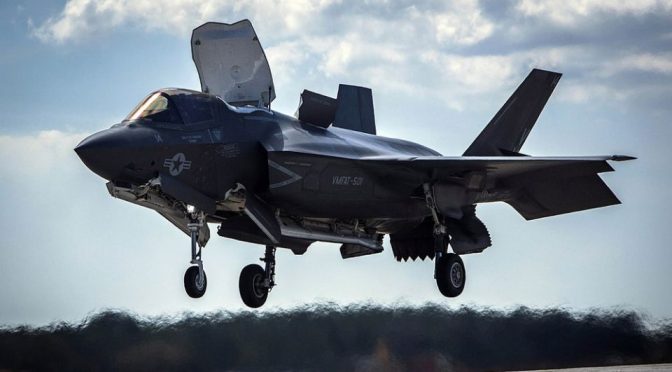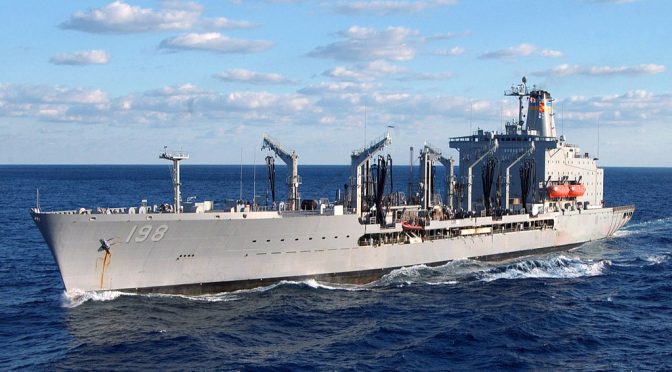By Mie Augier and Wayne Hughes
“The society that separates its scholars from its warriors will have its thinking done by cowards and its fighting done by fools.”1
– Variously attributed to Thucydides and 19th Century British General Sir Wm. F. Butler
Introduction
Last year we reflected on the topic of innovation in military organizations,2 and hinted at the roles of education in developing strategic leaders of adaptive organizations. In the light of current debates and senior DoD/DoN emphasis on education and critical and strategic thinking (including recent Navy initiatives and the newly released Education for Seapower report), here we elaborate on some aspects of the role of professional military education in more detail.3
Our military organizations must organize for innovation and adaptiveness such as recognizing disruptive ideas and preserving innovators who learn from failures. This emphasis has important educational dimensions: Our educational institutions must nurture and support the kind of thinking so central to any adaptive organization.
Two of the most important roles of education are to help students learn how to think, not what to think, and appreciate that learning is a lifetime activity. Fostering innovative thinking and broad understanding will help them adapt to (and shape) the future as well as fight smart if conflict breaks out. Our PME institutions can learn from their own pasts in thinking about how to educate future strategic leaders. In addition, we now have key strategic documents (National Security Strategy, National Defense Strategy, and the Education for Sea-power report) that PME institutions can orient toward when revising their educational programs and research to help undergird the national strategy in the future.
The Past as Prologue: Lessons from PME Institutional History
“War colleges … broaden the intellectual and military horizons of the officers who attend, so that they have a conception of the larger strategic and operational issues that confront our military and our nation.”4
– Admiral Stansfield Turner
“History for history’s sake is of no value to us. What is of value is the ability of our faculty to use whatever is necessary to educate officers to solve complex problems, manage change, and execute their decisions. This demands an extraordinary degree of mental flexibility and intellectual agility on the part of our faculty, whether they come from the world of practitioners or from the more traditional academic environment.”5
-VADM Ronald Route, former president of the Naval War College, 2004
Our PME institutions have rich histories and there is much to learn from studying them and incorporating them into our education.6 A major lesson is the tension between emphasizing “ready now” and “educate for future environments.” Such tensions also exist in other professions and professional schools; Herbert Simon saw the problem as one that needed constant attention because it involves integrating different (and sometimes opposing) forces, like mixing and stirring oil and water.7 Medical schools educate for medical practice while also doing fundamental research to improve the broad knowledge central to the future of the medical profession. The two sides – rigor and relevance – should not be thought of as opposites, but instead must be seen as two sides of the same coin when dealing with professional military education in order to facilitate interdisciplinary, empirically driven insights and understandings, concepts, and practice. Such integration can be achieved through emphasizing thinking and judgement. We need officers and enlisted to be able to conceptualize competition, conflict, and battle with active and open minds.
A brief overview of some major events in the institutional history of PME will be helpful:
PME began in Europe but by the late 19th Century it came to the U.S. with the founding of the Naval War College (1880). The establishment of the Army War College (1901) and Naval Postgraduate School (1909) helped channel the educational upgrading of officers.8 For instance, the first NWC president, Stephen B. Luce, saw his institution as a “place of original research on all questions relating to war, and to statesmanship connected with war, or the prevention of war.” Its early curriculum combined intellectual rigor and practical relevance.
Changes in the 1980s and 90s were fostered by the Goldwater Nichols Act and the Skelton Panel. The Skelton panel in particular recommended that despite finding many courses and programs and faculties to be “excellent,” “the existing PME system must be improved to meet the needs of the modern profession at arms.” Ike Skelton saw officer learning and education as a lifelong process, and that studying military history was central to it.9 The report’s recommendations included upgrading the quality of civilian and military faculty and improving thinking and jointness.
Each PME school evolved and adapted differently to societal and institutional changes. General Van Riper describes how the Marine Corps, led by the Commandant General Gray, underwent a comprehensive transformation to reemphasize education, including reading and learning outside one’s specialty, and building strategic and critical thinking into the organization.10 Gray noted the importance of ideas over rank or titles in the debates, aiming to instill in young Marines the courage to think differently, and to learn from failures, not fear them.11 Gray’s educational vision also led to the founding of the Marine Corps University, intended to emphasize thinking and judgment. The recent Education for Seapower report fittingly begins with a quote from General Gray, and it also notes the importance of his educational efforts as relevant today.
We mention this not to show that all was great in the past but to indicate that there is much we can learn from institutional experiences in focusing on the future. With this in mind, here are two observations to aid educating and retaining innovative thinkers:
- There was room for innovative and strategic thinkers in the past in our PME institutions; both from inside and outside the system (without trying to imitate businesses such as Google). For example, John Boyd’s “Patterns” briefings as well as Bill Lind’s efforts and writings influenced the development of maneuver warfare in the USMC and somewhat less directly, AirLand Battle in the Army.
- Cultivating and retaining innovative thinking requires forceful leaders. They challenge the status quo, and are vital to an organization’s ability to adapt. They are also not always right. Creativity includes the ability to fail, and learn, and not be punished. No-defect cultures kill creative thought.12
Over time educational institutions (like all institutions and organizations as they grow and age) tend to become routinized. A culture of normalcy crowds out ideas and people that “don’t fit.” Having discussed some of the institutional aspects needed to improve education for strategic and innovative thinkers, the next section touches on some of the intellectual and methodological aspects.
Successes from the Past as Lessons for the Future
Developing active minds is best done through active learning. Mental agility is cultivated through case studies of military history and participatory learning, for instance through free-play exercises and wargames in order to help teach thinking and judgment. Case studies and gaming are examples of active learning methodologies to help students think through uncertainties and ambiguities of the future, helping to create an organizational culture for continuous innovation and adaptation in peace and in war.
Gaming helps to imagine possible futures that participants and students live through and learn from. Wargames do not produce precise predictions of what will happen, but they expose officers to similar patterns, supporting their understanding of expected or unexpected situations and their intuitive decision making. As Nimitz said about the value of wargames: “The war with Japan had been [enacted] in the game room here by so many in so many different ways that nothing … was a surprise except Kamikaze.” Nimitz said wargamed conflicts during his NWC years “more than any other experience” prepared him for wartime command; as he noted: “The enemy of our games was always Japan, and the courses were so thorough that after the start of WWII – nothing that happened in the Pacific was strange or unexpected. …I credit the Naval War College for such success I achieved in strategy and tactics in both peace and war.” There were, of course, many surprises at the operational level such as the attack on Pearl Harbor, but Nimitz wanted to emphasize how vital wargaming was to prepare the fleet to adapt to Japanese success while preparing the USN and USMC to take the offensive.
Wargames have played a crucial role in experimentation and testing new ideas without going to sea; thus they serve as a first step beyond innovative thinking toward adoption and implementation.13 Gaming and experimenting at sea both contribute to adaptiveness of military organizations, allowing them to perform with existing capabilities and learning what new ones must be added.
PME applies at all levels. Although most commentators implicitly or explicitly emphasize PME for mid-level and senior officers, professional military training and education is also important for junior officers and petty officers. By far the biggest part of CNET and the Navy training establishment is devoted to current effectiveness. Seamanship and safe navigation are an important part of the effort. We believe, however, that attention should be devoted to how to think: To stimulate curiosity, broaden minds and help develop innovative thinking to anticipate future environments of conflicts, the attributes of new enemies, and anticipated technologies to employ or confound. An advantage of training and educating the best junior officers and enlisted men is that they have not yet become encumbered by the cautiousness embedded in many senior officers. The Navy and Marine Corps must nurture innovative thinking at all levels. The graduate education program at NPS is for junior officers. Here educating for future change is an important part of education.
PME for senior officers is centered on mental activity. Combat is in the domain of physical activity. A characteristic of current combat is its very short time constant, which is wholly different from the more leisurely pace seen in strategic planning and technological development. Response to a missile attack must be almost instantaneous. Preparation for swift deployment takes thoroughness and foresight.
Because this preparation for operations in peace and war is mostly in the domain of physical activity, education extends beyond the schoolhouse. Shipboard training, wargames, and training on simulators, all can help shape the mental and intellectual ability to understand and conceptualize conflict. One of the first applications of simulations was the early development of flight trainers.
Because PME education must foster curiosity it cannot be reduced to recipes or checklists. Its benefits are often intangible—instilling attitudes of inquiry and curiosity that include:
- The development of future strategic leaders. There is now a recognition that the education of strategic and innovative leaders is paramount. Our recent Defense Secretary James Mattis is a product of this; as General Van Riper noted, reflecting on his own time as president of MCU and the educational reforms General Gray launched “the work to overhaul professional military education continued under the sure hands of others …. Perhaps no better manifestation of the results the Commandant anticipated exist than the performance of the senior Marine commanders, Lieutenant General Jim Conway, and Major Generals Jim Mattis and Jim Amos, during Operation Iraqi Freedom.”14
- Identifying innovative leaders. There is rarely room in large organizations to cultivate creative thinking by everyone. Some officers are better at reliable execution. It is hard for both to shine, and for leaders to become aware of the contrasting talents. PME can both help enable students to sharpen their thinking; stimulate their curiosity and creative instincts; and help them think how to use this to make their institutions more innovative, for instance through thesis work. It can also help them recognize the uses (and limitations) of analytical thinking versus critical and innovative thinking and how to apply both in appropriate ways in the strategic and operational contexts in their futures.
Having discussed some chronology and themes relevant in the past for the present debate, we turn now to a few specific actions to refocus PME toward the future.
The Education of Future Innovative and Strategic Leaders
“PME has stagnated, focused more on the accomplishment of mandatory credit at the expense of lethality and ingenuity. We will emphasize intellectual leadership and military professionalism in the art and science of warfighting, deepening our knowledge of history while embracing new technology and techniques to counter competitors. PME will emphasize independence of action in warfighting concepts to lessen the impact of degraded/lost communications in combat. PME is to be used as a strategic asset to build trust and interoperability across the Joint Forces and with allied and partner forces.”
– National Defense Strategy
Educating leaders who understand the changing challenges and can adapt to them requires an educational environment that enables growth intellectually and professionally through rigorous and relevant education and training. While the National Defense Strategy recognizes problems in current PME, it also gives us commanders intent for how to improve PME to make it a national strategic asset again. Together with the National Security strategy, as well as the Education for Seapower report, these documents provide themes and insights into the likely trends in the future security environment for our PME institutions to orient toward in both research and education. Themes should include the following elements.
Organizational adaptiveness. The ability to respond to the unexpected is central to organizational resilience (as is emphasized in the NSS). History, case studies, broad reading, and wargaming help deal with unexpected futures. Together with the cognitive and attitudinal skills needed to think critically, students will widen their horizons, learn to recognize trends, and anticipate changes in the security environment and adapt to them.
Peace through Strength. There is an emphasis in the NSS to preserve peace through strength as well as ability to achieve surprise if needed.15 Our PME institutions must teach future strategic leaders to understand how our competitors understand the world through their eyes. This often means leaving the comfort of our analytic frameworks and theories; but what we lose in analytic application, we gain in insight.
Organizational and operational capabilities. Long-lived forces must be adaptable in time of cooperation, competition, confrontation, and conflict. They must be able to confront competitors of various sizes and in various kinds of unfriendly territory. Future leaders and decision-makers must know both how to contain intense but short conventional wars as well as fight in extended, low intensity conflicts.16
Avoid over-dependence on high tech. As an example, GPS jamming is likely if we face near-peer competitors so old school tactics must be part of combat training. We must also prepare for cyber warfare. As another example, artificial intelligence will be embedded in future near-peer warfare, but its methods are best inculcated as an extension of human intellect, not a replacement for it. Third, in exploiting unmanned and robotic vehicles, high technology should be avoided when tasks can be accomplished by small, inexpensive, single-purpose units deployed in large numbers.
Heretofore we have shown ways PME rewards students. Other lessons apply to faculty activity and curriculum development. For example: interdisciplinary and holistic problem solving and collaboration is increasingly relevant (as is the need for faculty research across disciplines and departments with an eye for applying their research and teaching to issues relevant to national defense).17 This is increasingly so as the problems we confront become more complex and ill-structured (‘wicked problems,’ in the jargon of the day). Our best leaders emphasize and understand unstructured problems. Understanding them (and their possible solutions) usually entails cooperation between faculty in several departments or teams of officers from several different professional disciplines and perspectives. The emphasis on interdisciplinary research echoes insights expressed earlier by Herman Kahn, Andrew Marshall, and James Schlesinger that emphasized interdisciplinary strategic thinking with warnings against “modelism” and “toolism” approaches. They also recognized the importance of history and of educating and researching for national defense, not contributing to textbook civilian approaches.
Actions to help achieve PME Excellence
“The most important six inches on the battlefield is between your ears.”
– James Mattis
PME must foster broad thinking and encourage curiosity.18 A fundamental aim of graduate education is to provide mental frameworks that foster wide-ranging exploration, a willingness to take risks, and a resolve to learn from and overcome failures. Top Navy and Marine leadership must promote innovators in peace and war.
In addition to helping to achieve the education of innovative leaders, military education must help re-invigorate all military institutions and re-energize Service culture. PME should support the National Defense Strategy that emphasizes readiness to execute now at the same time it explores alternative futures and possible future changes. One must build forces that operate in the present, but because most Navy ships and aircraft have 25 to 40-year service lives their long-term suitability must be checked against prospective geopolitical and technological futures.
Our recent Secretary of Defense had a clear vision to foster change, providing inspiration for the decades to come. He wrote, “we must shed outdated management and acquisition practices, while adapting American industry’s best practices. Our management structures and processes are not engraved in stone” (Mattis, 2018). Military administration and educational motivations need to be as adaptive and flexible as the most successful, swiftly changing, private corporations.19
Successful education inculcates attitudes and a talent for lifelong learning. As the Education for Seapower report notes: “a most urgent national security task before us today is to intellectually prepare our leaders for … uncertainty by equipping them with a strategic framework of how to think about the future … gained through a continuous, lifelong process of learning” (p. 9).
Finally, education of our most innovative leaders is important both for executing the current national security strategy today, and for preparing future generations to adapt quickly and effectively so we won’t be caught in a catch-up mode.
Dr. Mie Augier is a professor at the Graduate School of Business and Public Policy at the Naval Postgraduate School. She is interested in strategy, organizations, innovation, leadership, and how to educate strategic and innovative thinkers.
Captain Wayne Hughes, USN (Ret.) served thirty years on active duty, commanding a minesweeper, a destroyer, and a large training command. In retirement he has taught, done research, and served as a Dean at the Naval Postgraduate School for over thirty years. He is a distinguished author of the U.S. Naval Institute.
We are grateful to VADM Ronald Route (ret.), Andrew Marshall, Chris Nelson, and General Alfred Gray for comments on early drafts, and helpful suggestions. Any remaining errors were produced without help.
References
1 Variously attributed to Thucydides and 19th Century British General Sir Wm. F. Butler
2 See https://cimsec.org/leading-military-innovation-past-and-present/37073
3 See, for instance, “Service Leaders Rethinking Navy and Marine Corps Education” (USNI news; https://news.usni.org/2018/04/23/33115). Other recent documents discuss the need for critical thinking skills as requirement for Navy officers. We shall refrain from trying to define critical thinking here; though we do want to note the importance of not defining it as “kind of like” one’s favorite topic or approach or discipline. There are decades of research on critical thinking and how it helps facilitate learning that we respect. In the context of PME, the most important aspect of critical thinking is the ability to think critically about strategy and strategic thinkers in order to develop better leaders. General Gray’s founding of MCU (Marine Corps University) and overall vision for PME was very much in the spirit of education for critical thinking and the importance of judgment. Additionally, when applying critical and strategic thinking to educating for seapower it is essential to not just ‘import’ a civilian approach and/or study well structured problems (Van Riper has elaborated on this).
4 Cited in Sinnrich & Murray (eds): The Past is Prologue (Cambridge: Cambridge University Press), p. 9.
5 Naval War College Review, 2004.
6 Many of those echoes of past debates are as relevant now as ever. For instance, Scales; question on ‘are we too busy to learn’ (USNI Proceedings, Feb 10, 2010), and his recent book, “Scales on War”, also taking on important discussions on the human dimension in war.
7 See, Herbert A Simon (1967): The Business School: A problem of Organizational Design. Journal of Management Studies.
8 Our PME institutions have not been without flaws; sometimes too drawn to the lure of the individual disciplines (which, as Andrew Marshall reminds us, can produce “trained incapacity” for strategic and innovative thinking). Another danger (which Scales reminded us in his piece ‘too busy to learn’) is that war is “not a science project”; calling attention to the need behavioral and social science in thinking about war and conflict (also see Scales, “On War” book for elaboration).
9 Skelton said: “It is a process of education, study, reading and thinking that should continue throughout an entire military career. Yes, tactical proficiency is very important, but so too is strategic vision. That can only come after years of careful reading, study, reflection, and experience”.
10 Paul K. Van Riper (2006): The relevance of history to the military profession: An American Marine’s view. In Murray and Sinnreich (eds) (2006): The Past as Prologue: The importance of history to the military profession. Cambridge: Cambridge University Press.
11 Van Riper (2002) noted in looking back at the importance of this emphasis: “Leaders at all levels welcomed ideas; ranks of the authors of innovative notions mattered little. What counted was the ability of new thoughts to prove their merit in wide-ranking, open debates in service schools and journals” (Van Riper, “Preparing for War takes Study and open Debate”, Proceedings, Nov. 2002).
12 Another trap to avoid is excess supervision; as the Marines recognize in FMFM-1: “We cannot rightly expect our subordinates to exercise boldness and initiative in the field when they are accustomed to being over-supervised in the rear” (p. 65).
13 Though we don’t elaborate on it here, equally important as an active learning tool is case studies, as emphasized by Gen Gray, including in his upgrading of USMC education, and founding of MCU.
14Van Riper, 2006, p. 51. The emphasis on active learning and thinking is also embodied in core documents / ‘how the organization thinks’ too. E.g. “Professional Military Education is designed to develop creative, innovative leaders” (FMFM-1)
15 As noted: “China and Russia challenge American Power, influence and interests attempting to erode American security and prosperity. … at the same time, dictatorships of DPRK and Iran are determined to destabilize religions, threaten American people and our allies, and brutalize their own people”.
16 There is a need to think about the possible big changes coming, not just militarily but the larger shift towards Asia in terms of economies. Another possible big change is the likely far away areas of possible conflict (further away than Europe was our earlier focus), together with possible widespread use of anti ship ground based missiles. If over time, there are more areas where our surface ships will be in danger. How does that influence the balance of power between competitors, large and small?
17 At NPS, interdisciplinary problem solving and understanding is emphasized, for instance, through individual curricular and active learning approaches (including case studies and war gaming); faculty collaboration across specialties; research on department of defense problems; thesis work, and special initiatives (such as the CRUISER program) that have rapidly and efficiently advanced the state of the UAV technology and tactics. A national defense focus can be encouraged even more by having faculty focus their research and educating to focus on supporting E4S/NSS/NDS.
18 As the Education for Seapower report notes: “we must educate leaders who have the skills required to solve problems that cannot even be imagined today” …. “This will require an educational system that looks to the future as well as the past, which is agile enough to adapt as new problems are identified, and that will help us understand them. It is a system that must be built on the insatiable curiosity of naval professionals, both operators, professors, and researchers alike” (p. 13).
19 As also noted in the Education for Seapower report: “As an organization, we must anticipate changes in the operating environment and adapt to maintain an advantage. This can only be done by eliminating outdated personnel practices, adopting agile processes and continuously improving how we operate and fight, It is highly unlikely that the greatest naval strategists and leaders of our past … would be successful in todays’s bureaucratic environment. Simply put, the best naval strategists that our naval education enterprise can produce today will fail without improving the organization in which they operate” (p. 11-12).
Featured Image: The Thinker in front of the Rodin Museum in Philadelphia. (Wikimedia Commons)





